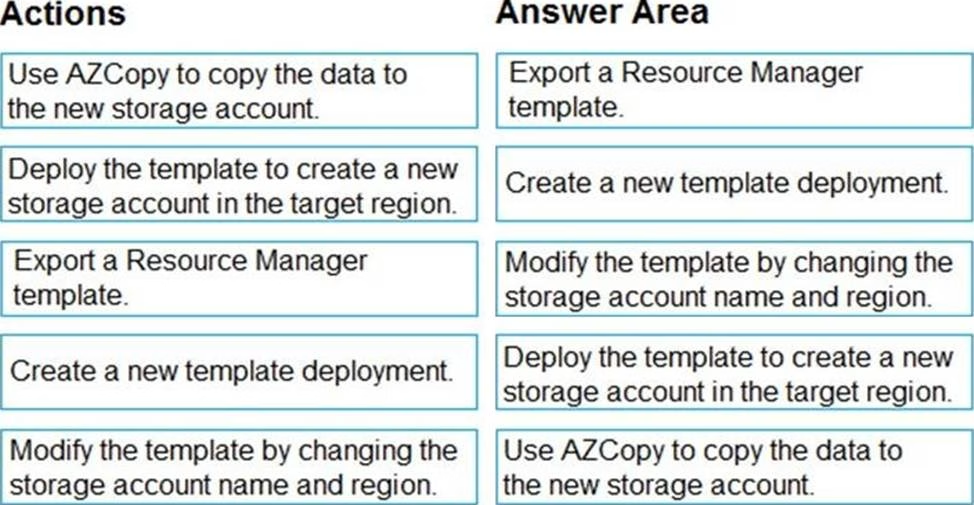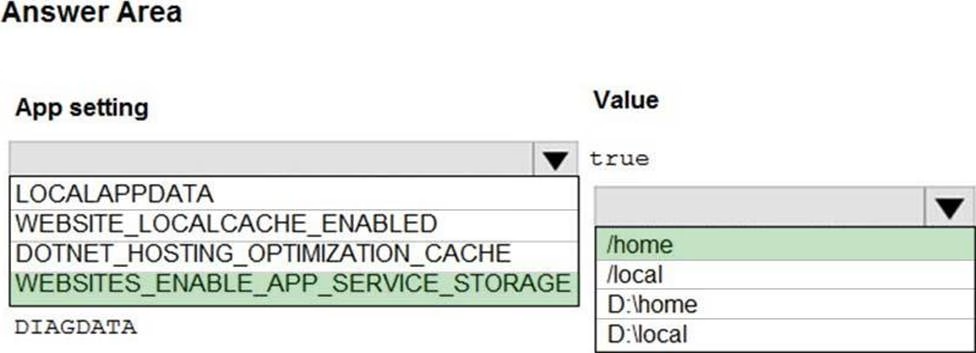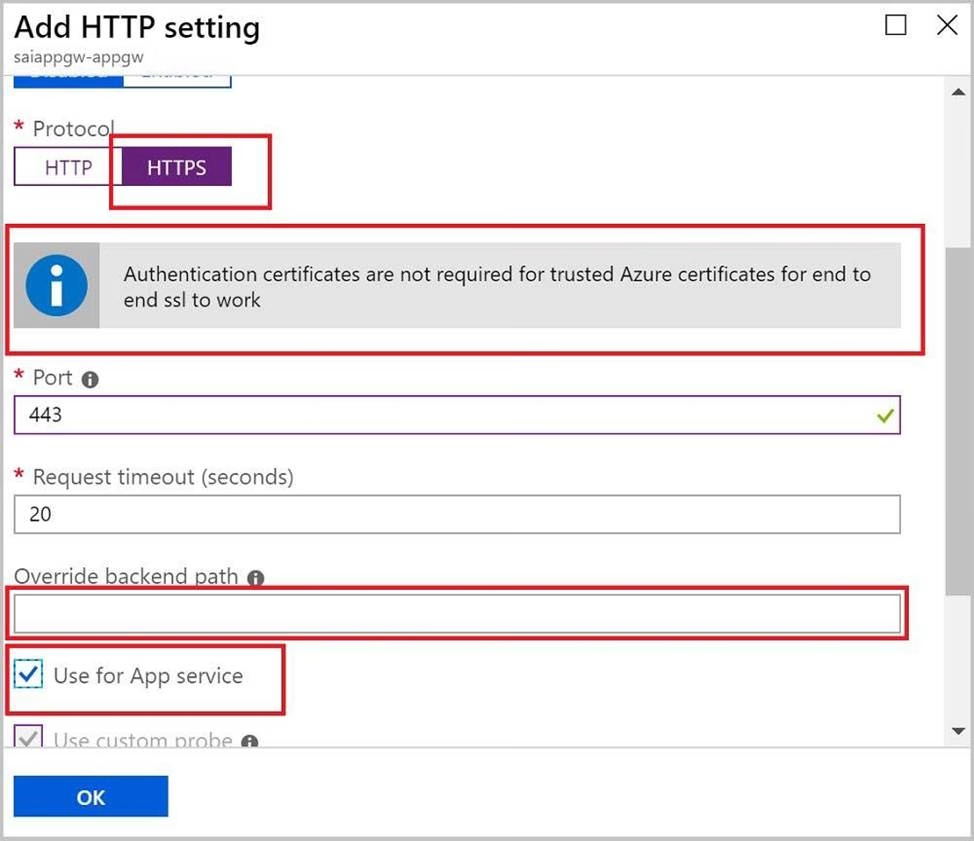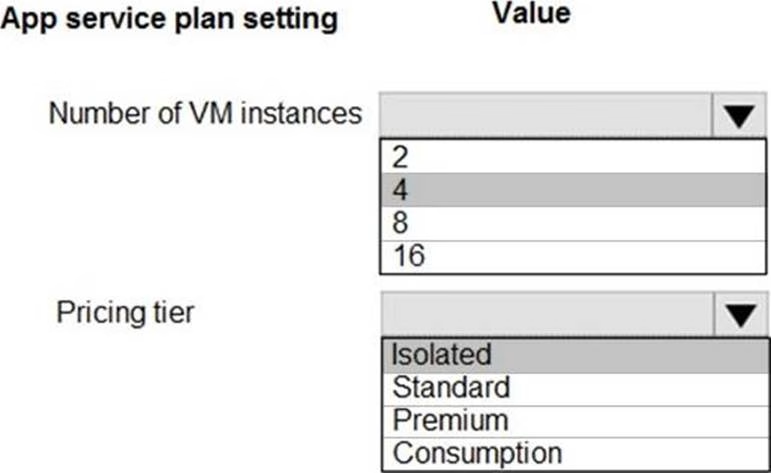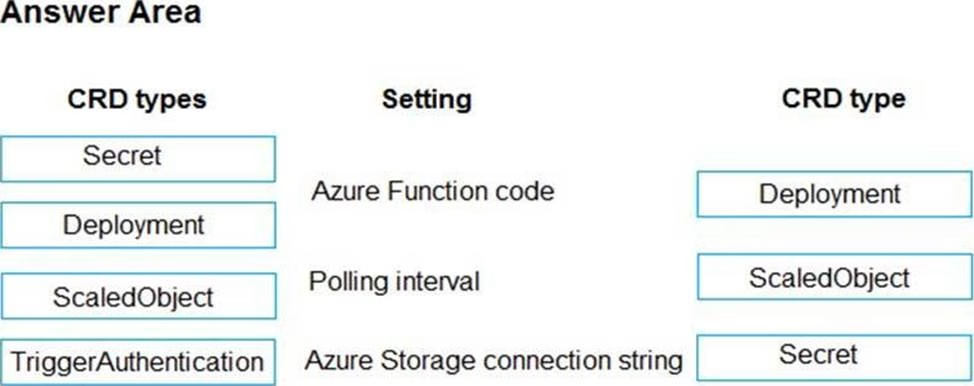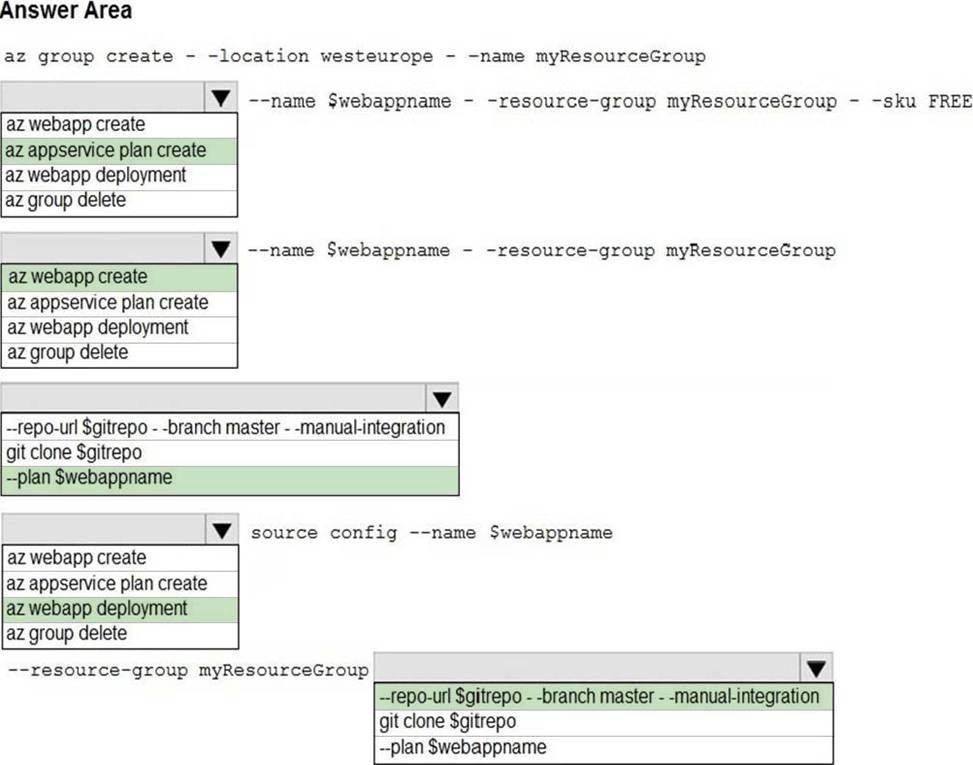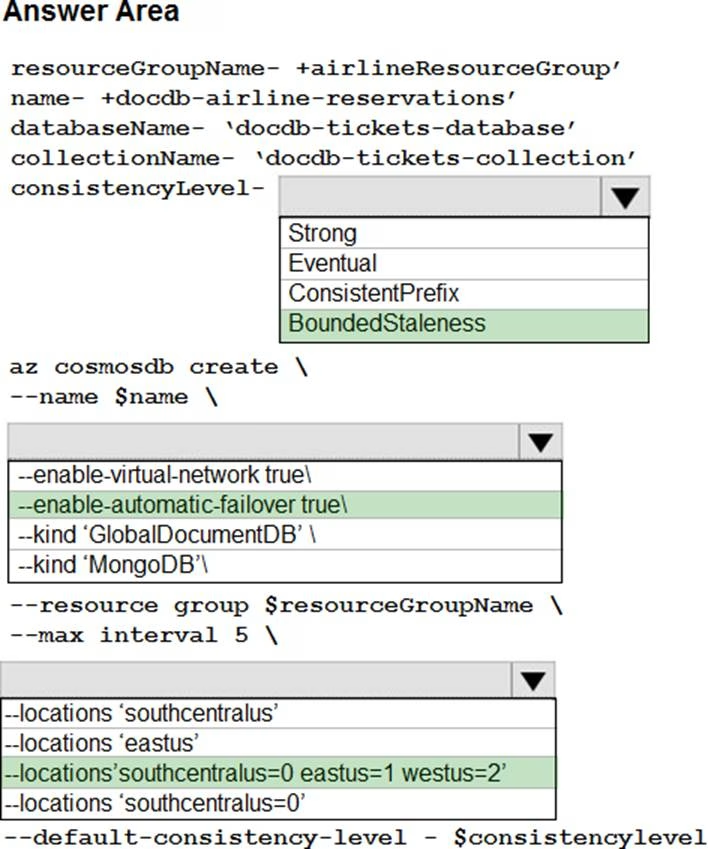Microsoft AZ-204 Developing Solutions for Microsoft Azure Online Training
Microsoft AZ-204 Online Training
The questions for AZ-204 were last updated at Dec 18,2025.
- Exam Code: AZ-204
- Exam Name: Developing Solutions for Microsoft Azure
- Certification Provider: Microsoft
- Latest update: Dec 18,2025
You are developing an application that uses Azure Blob storage.
The application must read the transaction logs of all the changes that occur to the blobs and the blob metadata in the storage account for auditing purposes. The changes must be in the order in which they occurred, include only create, update, delete, and copy operations and be retained for compliance reasons.
You need to process the transaction logs asynchronously.
What should you do?
- A . Process all Azure Blob storage events by using Azure Event Grid with a subscriber Azure Function app.
- B . Enable the change feed on the storage account and process all changes for available events.
- C . Process all Azure Storage Analytics logs for successful blob events.
- D . Use the Azure Monitor HTTP Data Collector API and scan the request body for successful blob events.
DRAG DROP
You are developing an application to use Azure Blob storage. You have configured Azure Blob storage to include change feeds.
A copy of your storage account must be created in another region. Data must be copied from the current storage account to the new storage account directly between the storage servers.
You need to create a copy of the storage account in another region and copy the data.
In which order should you perform the actions? To answer, move all actions from the list of actions to the answer area and arrange them in the correct order.
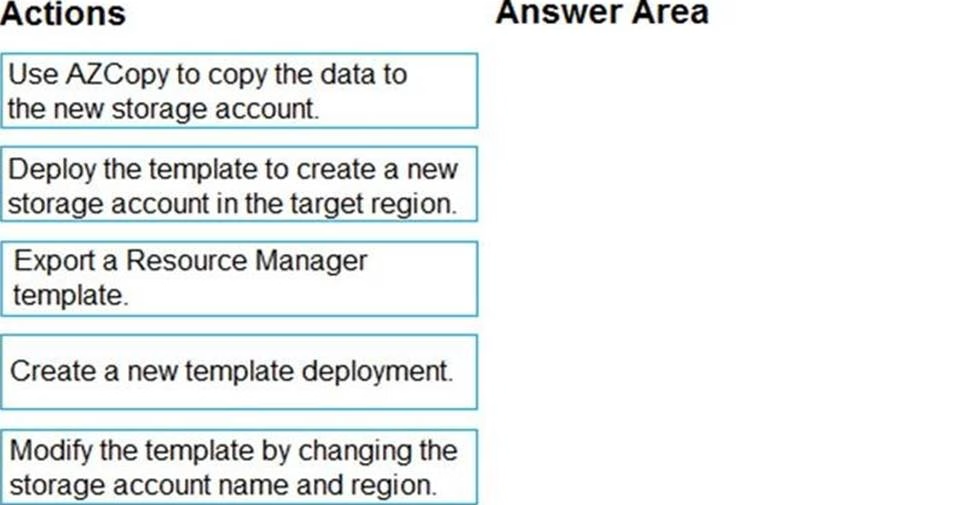
HOTSPOT
You are developing an ASP.NET Core web application. You plan to deploy the application to Azure Web App for Containers.
The application needs to store runtime diagnostic data that must be persisted across application restarts.
You have the following code:

You need to configure the application settings so that diagnostic data is stored as required.
How should you configure the web app’s settings? To answer, select the appropriate options in the answer area. NOTE: Each correct selection is worth one point.
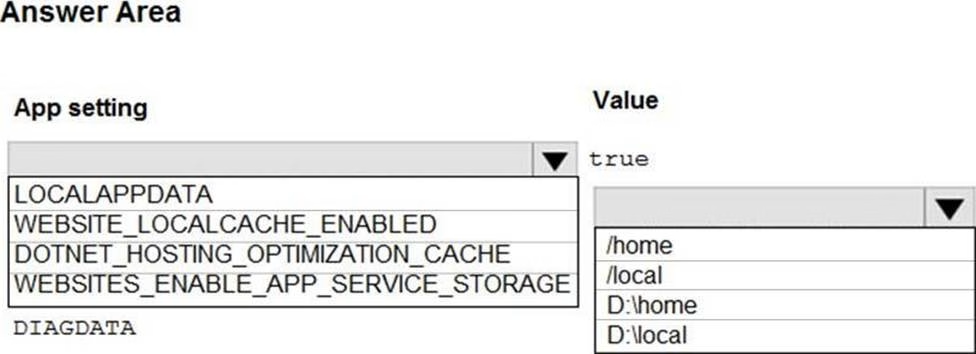
You are developing a web app that is protected by Azure Web Application Firewall (WAF). All traffic to the web app is routed through an Azure Application Gateway instance that is used by multiple web apps. The web app address is contoso.azurewebsites.net.
All traffic must be secured with SSL. The Azure Application Gateway instance is used by multiple web apps.
You need to configure the Azure Application Gateway for the app.
Which two actions should you perform? Each correct answer presents part of the solution. NOTE: Each correct selection is worth one point.
- A . In the Azure Application Gateway’s HTTP setting, enable the Use for App service setting.
- B . Convert the web app to run in an Azure App service environment (ASE).
- C . Add an authentication certificate for contoso.azurewebsites.net to the Azure Application gateway.
- D . In the Azure Application Gateway’s HTTP setting, set the value of the Override backend path option to contoso22.azurewebsites.net.
HOTSPOT
You are implementing a software as a service (SaaS) ASP.NET Core web service that will run as an Azure Web App. The web service will use an on-premises SQL Server database for storage. The web service also includes a WebJob that processes data updates.
Four customers will use the web service.
✑ Each instance of the WebJob processes data for a single customer and must run as a singleton instance.
✑ Each deployment must be tested by using deployment slots prior to serving production data.
✑ Azure costs must be minimized.
✑ Azure resources must be located in an isolated network.
You need to configure the App Service plan for the Web App.
How should you configure the App Service plan? To answer, select the appropriate settings in the answer area. NOTE: Each correct selection is worth one point.
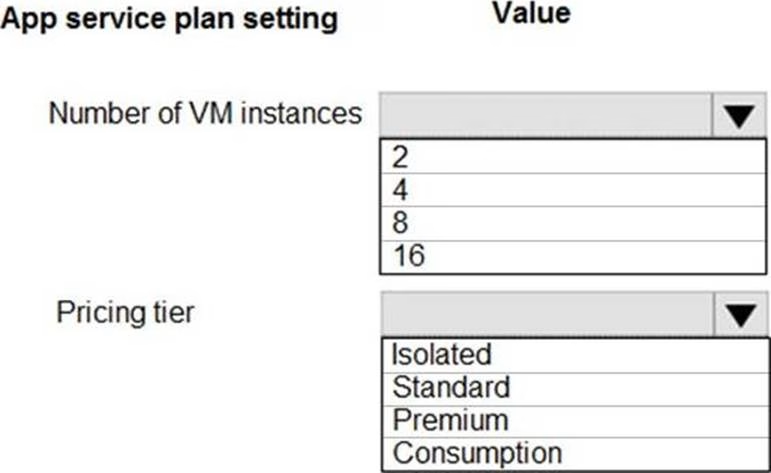
DRAG DROP
You are a developer for a software as a service (SaaS) company that uses an Azure Function to process orders. The Azure Function currently runs on an Azure Function app that is triggered by an Azure Storage queue.
You are preparing to migrate the Azure Function to Kubernetes using Kubernetes-based Event Driven Autoscaling (KEDA).
You need to configure Kubernetes Custom Resource Definitions (CRD) for the Azure Function.
Which CRDs should you configure? To answer, drag the appropriate CRD types to the correct locations. Each CRD type may be used once, more than once, or not at all. You may need to drag the split bar between panes or scroll to view content. NOTE: Each correct selection is worth one point.
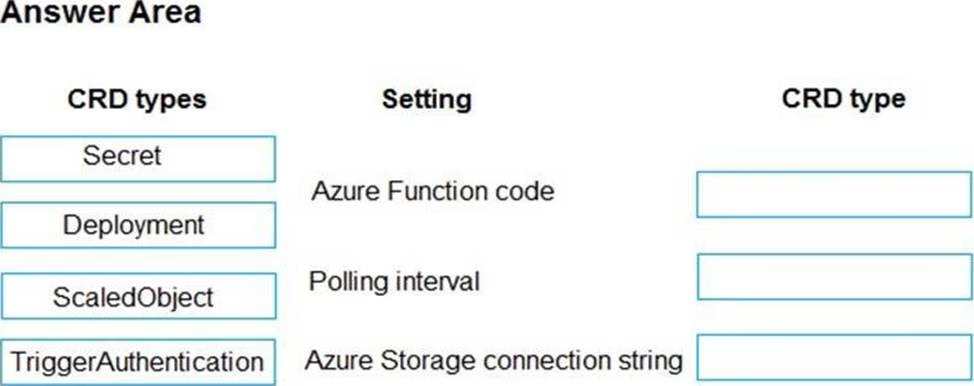
HOTSPOT
You are creating a CLI script that creates an Azure web app related services in Azure App Service.
The web app uses the following variables:

You need to automatically deploy code from GitHub to the newly created web app.
How should you complete the script? To answer, select the appropriate options in the answer area. NOTE: Each correct selection is worth one point.
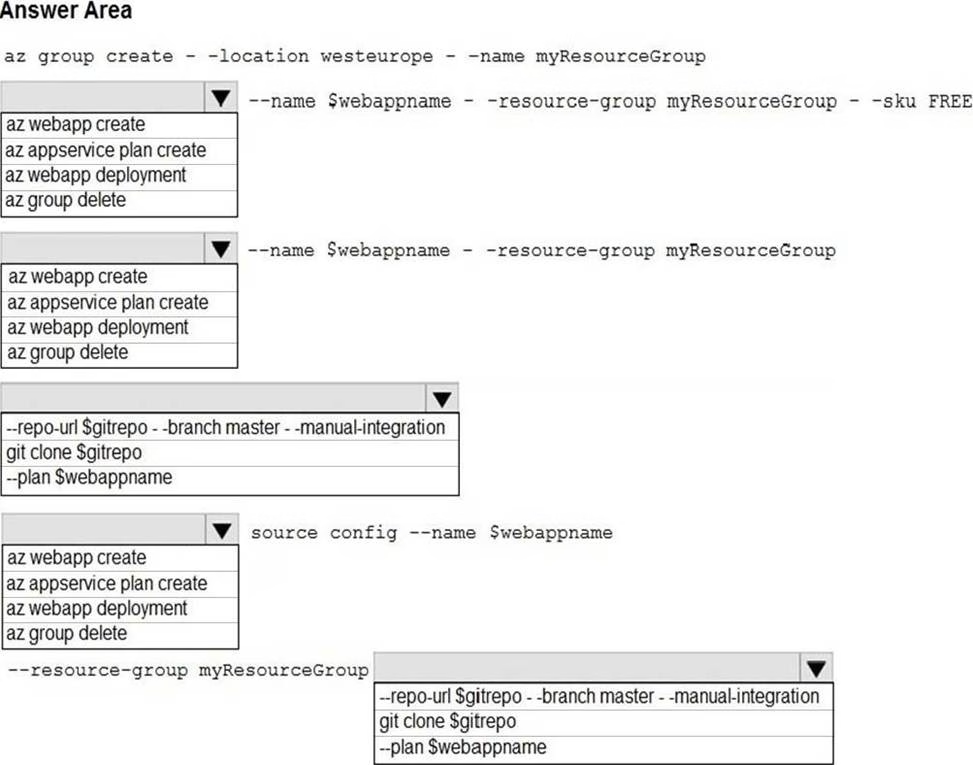
Note: This question is part of a series of questions that present the same scenario. Each question in the series contains a unique solution that might meet the stated goals. Some question sets might have more than one correct solution, while others might not have a correct solution.
After you answer a question in this section, you will NOT be able to return to it. As a result, these questions will not appear in the review screen.
You develop a software as a service (SaaS) offering to manage photographs. Users upload photos to a web service which then stores the photos in Azure Storage Blob storage. The storage account type is General-purpose V2.
When photos are uploaded, they must be processed to produce and save a mobile-friendly version of the image. The process to produce a mobile-friendly version of the image must start in less than one minute.
You need to design the process that starts the photo processing.
Solution: Trigger the photo processing from Blob storage events.
Does the solution meet the goal?
- A . Yes
- B . NO
HOTSPOT
You are developing a ticket reservation system for an airline.
The storage solution for the application must meet the following requirements:
✑ Ensure at least 99.99% availability and provide low latency.
✑ Accept reservations event when localized network outages or other unforeseen failures occur.
✑ Process reservations in the exact sequence as reservations are submitted to minimize overbooking or selling the same seat to multiple travelers.
✑ Allow simultaneous and out-of-order reservations with a maximum five-second tolerance window.
You provision a resource group named airlineResourceGroup in the Azure South-Central US region.
You need to provision a SQL SPI Cosmos DB account to support the app.
How should you complete the Azure CLI commands? To answer, select the appropriate options in the answer area. NOTE: Each correct selection is worth one point.
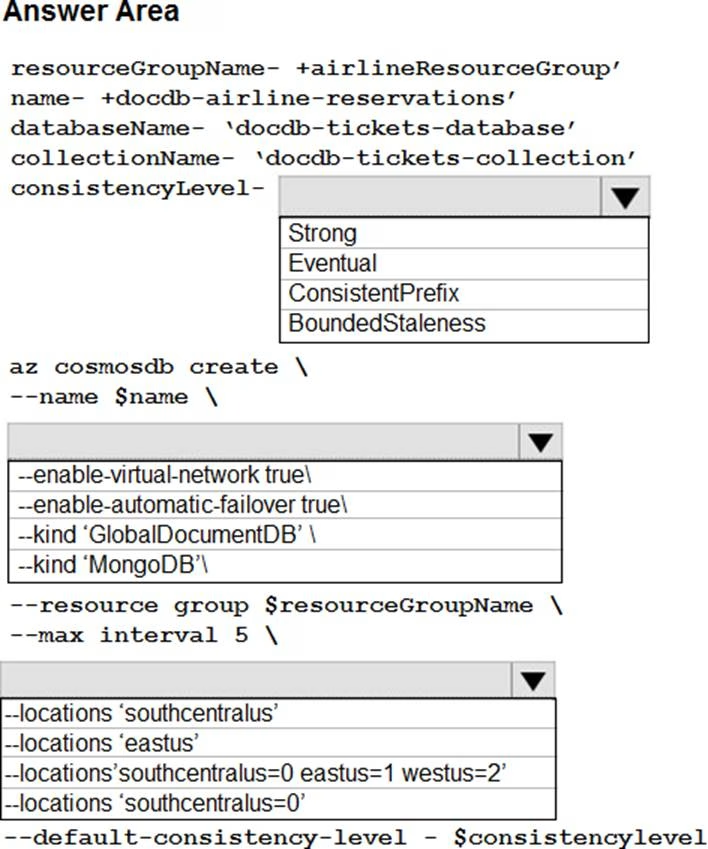
You are building a loyalty program for a major snack producer. When customers buy a snack at any of 100 participating retailers the event is recorded in Azure Event Hub. Each retailer is given a unique identifier that is used as the primary identifier for the loyalty program.
Retailers must be able to be added or removed at any time. Retailers must only be able to record sales for themselves.
You need to ensure that retailers can record sales.
What should you do?
- A . Use publisher policies for retailers.
- B . Define a namespace for each retailer
- C . Create a partition for each retailer.
Latest AZ-204 Dumps Valid Version with 254 Q&As
Latest And Valid Q&A | Instant Download | Once Fail, Full Refund

